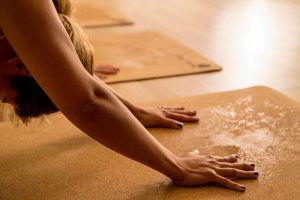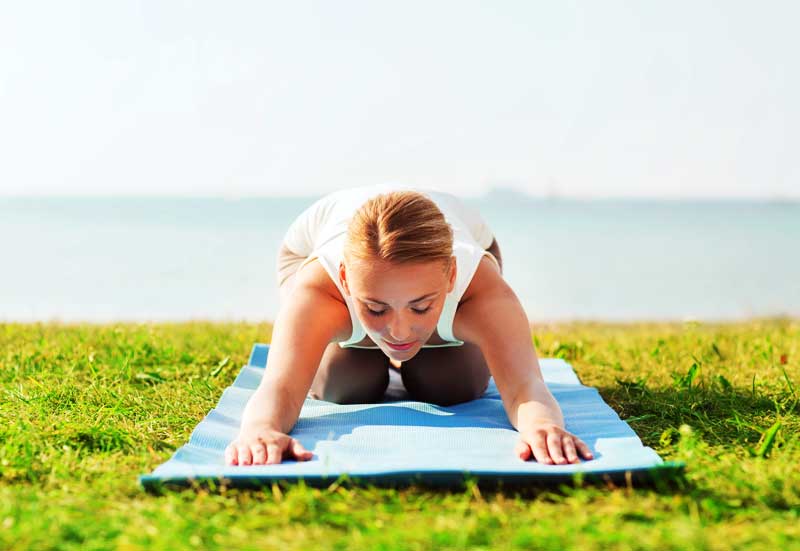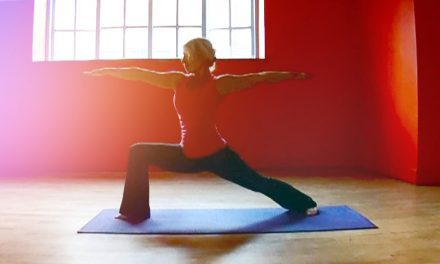If you are one of those people who doesn’t enjoy other people’s perspiration all over your exercise machine and mats, that’s fair. More than 130 survey responders groused about salty sweat droplets on equipment and soggy mats.
Most of us know to wear flip-flops in the shower and locker rooms but yet fail to think about it on a yoga mat. The idea of a communal mat is inherently gross. Who wants to roll around in somebody else’s sweat for an hour? The closest comparison in terms of germs and bacteria would be sharing a toothbrush or a used towel with a stranger. Yoga is a barefoot practice, so the risk of funguses and athlete’s foot is prominent. Just remember that next time you are facing down in child’s pose. Next time you take child’s pose, know that you are potentially resting in a slew of microbes that can cause skin infections, athlete’s foot, colds and flu, and even hepatitis A.

For vigorous yoga styles you’ll want a non slip mat dripping preferably in your own sweat! Why not try a cork mat?
Bacteria can survive for several hours even several days on inanimate surfaces, while viruses can linger for weeks. Lots of yoga studios and gym have questionable mat-cleaning practices. A quick wipe doesn’t really do the job when bacteria colonies have moved inside the mat as opposed to just the surface. Let’s face how many facilities deep wash their mats? Having worked the industry, I can confidently say, not many. And for those few that do, it would most certainly not be after EVERY class or usage.
When it comes to Yoga practice, there are many good reasons for practitioners to get their own mat. So just in case this wasn’t enough to compell you to buy your own mat, let me outline you some more reasons:
- The obvious reason would be: Hygiene. If you dislike: athlete’s foot, colds and flu, ringworms and hepatitis A as previously mentioned, you might not need more reasons.
- Yoga mats come in different lengths, width, thickness, textures and materials. If you are taller than average you might get an extra long yoga mat. If you’re going to do faster tempo classes such as Vinyasa or Ashtanga, stickiness getting a good sticky yoga mat with a good grip will make a huge difference. You’ll have the mat that is right for you.
- Your mat will become your ‘sanctuary’ of private space much like a prayer mat.
Familiarity and connection. Your mat is like your loyal companion on your Yoga journey. The familiar indents created by you - Do Yoga anywhere. You’ve just purchased yourself a portable health and fitness centre.
But just in case you forgot your mat today and do not want to miss out on your class. Here are a few things you can do
- Cover your mat with a towel. If you find yourself renting a mat often you might even opt for a yoga non-slip towel.
- Keep your socks on. If you prefer keeping your socks on in general you could always get a pair of yoga socks.
- You don’t have to be a complete germaphobe to carry hand wipes with you. If you have them, use them. Make up remover towels can also do the job.
What Gyms and Studios can do to ensure better hygiene:
- Give members access to disinfectant wipes
- Have staff clean and desinfect mats regularly
- Avoid rolling sweaty unwipped mats. These quickly become bacterial breeding grounds
- Don’t want to dable with wipes and antibacterial sanitizers? You might consider UV-C light for your facility. Despite it’s Star Trekky feel and cash depleting feel to it, it’s actually very affordable even for smaller studios and will save hours in scrubbing and drying mats.
It my next article we’ll be talking about mat care and some great natural disinfectant you can easily make yourself.





